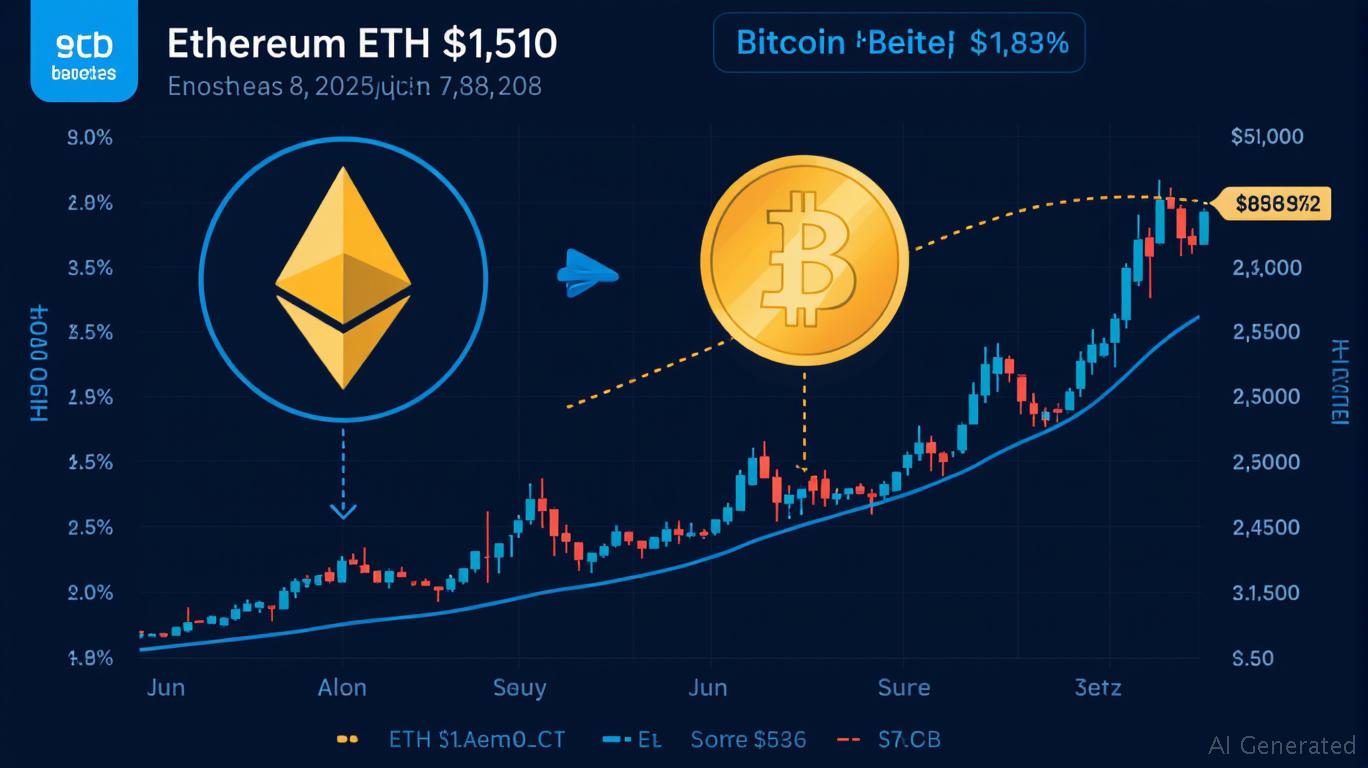Beyond Bitcoin: Why Institutions Are Diversifying into Ethereum and Solana's Blockchain Ecosystems
The cryptocurrency market has long been dominated by
, which accounts for over 40% of the total crypto market cap. However, institutional investors are increasingly turning to (ETH) and (SOL) as strategic alternatives for diversification. These altcoins offer distinct advantages—Ethereum's smart contract versatility for NFTs and enterprise applications, and Solana's lightning-fast DeFi scalability—positioning them as critical components of a modern crypto portfolio.
Ethereum: The Enterprise NFT Engine
Ethereum's Layer 2 (L2) networks like Arbitrum and Base have become the backbone of corporate NFT initiatives, enabling scalable and cost-effective use cases for institutions. For example:
- Atari, the gaming giant, deployed its classic NFT games on Base, leveraging Ethereum's infrastructure to reduce gas fees by 90% compared to the base layer.
- Lamborghini partnered with Animoca Brands to launch the FastForWorld platform on Base, allowing users to trade virtual vehicles across games like Torque Drift 2.
- Lotte Group's Caliverse, a metaverse platform on Arbitrum, now supports virtual concerts and shopping experiences with 250ms block times—critical for real-time interactivity.
Ethereum's reduced volatility relative to Bitcoin (standard deviation of 2.5% vs. BTC's 4.3% in 2025) has attracted institutional capital. Financial firms like
are even building ZK-Rollups on Ethereum with Matter Labs to tokenize real-world assets, signaling its role as a compliance-friendly enterprise platform.Solana: The DeFi Scalability Champion
Solana's ability to process 4,000+ transactions per second at fractions of a cent per transaction has made it a magnet for DeFi and institutional payments. Recent partnerships include:
- Bullish, a crypto exchange, collaborating with the Solana Foundation to integrate stablecoins for institutional trading and custody.
- Upexi, a Nasdaq-listed firm, tokenizing its shares on Solana via Superstate's Opening Bell platform, enabling 24/7 trading.
- Marinade, Solana's staking protocol, now custodian-integrated with BitGo and Zodia, managing $767M in institutional assets with 7.7% APY.
The launch of the first U.S. crypto staking ETF (SSK) on Solana in July 2025 further underscores its institutional legitimacy. Solana's Alpenglow upgrade, cutting block finality to 150ms, has also enabled real-time applications like high-frequency trading and microtransactions.
Why Diversify Beyond Bitcoin?
- Utility-Driven Demand: Ethereum's NFTs and Solana's DeFi are tied to real-world use cases, not just speculative bets.
- Reduced Volatility: Both coins exhibit lower volatility than Bitcoin when measured against traditional assets like equities.
- Regulatory Tailwinds: Ethereum's compliance tools and Solana's institutional-grade staking protocols align with SEC requirements for legitimacy.
Risks to Consider
- Regulatory Uncertainty: The SEC's stance on tokenized equities (e.g., Upexi's Solana tokens) remains a wildcard.
- Market Cyclicality: Altcoins often underperform Bitcoin during bear markets. Diversification should be gradual.
- Solana's Reliability: While improved, its history of outages (now reduced to 0.0001% downtime in 2025) still raises concerns.
Investment Strategy
Institutions should allocate 10–15% of their crypto portfolios to Ethereum and Solana, focusing on:
1. ETH: Buy via ETFs like the ProShares Ethereum ETF (ETHX) or stake via L2 protocols like Arbitrum.
2. SOL: Invest in the Solana ETF (SSK) or protocols like Marinade Select, which offer institutional-grade staking with 99.9% uptime.
3. Hedging: Use derivatives to mitigate volatility, especially during market downturns.
Conclusion
Bitcoin's dominance is no longer a barrier to entry. Ethereum and Solana offer institutional investors access to high-growth, utility-driven ecosystems with enterprise-grade scalability and reduced volatility. While risks like regulation and market cycles persist, the strategic diversification into these altcoins—backed by real-world partnerships and technical innovation—could yield outsized returns in the coming years.
Invest wisely, and remember: diversification isn't just about spreading risk—it's about capturing opportunity.

Comments
No comments yet